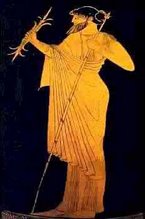
I chose to Zap the coin you see above. The coin was a "tweener" and I could have filed it away and forgotten about it. However I chose to Zap the coin and I am very pleased with the results. In hand the coin has a nice rich texture and it also has what will become a nice rich patina.
I will allow the coin to patinate for a month or so before using my stop bath and I can already tell I will have a very nice coin. One upside is that I paid very little for the coin because of condition and I am well pleased.
As an art professor I did a bit of restoration work on a few paintings and I see my work with my Zapped coins from pretty much the same perspective. I am correcting and pleasing my eye. As I age (71 February 6Th) I am still blessed with a keen eye and my sense of design is what it was 50 years ago.
As a painter and teacher I was never in bondage to tradition and I feel the same about my coins. If you like my coin then we are on the same page. If not, I accept your position. I would never be upset or angry because another does not agree with me.
If you have an interest in Zapping, I will be happy to share the knowledge I have developed over the past several years. If you like my post please take a look at my blog. The URL is as follows: http://www.ancientpeddler.blogspot.com I experiment a great deal with coin photography and you may find something that will help you there also.. God Bless.. Jerry..





